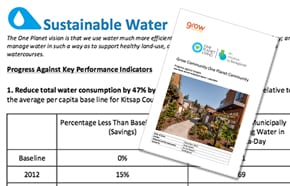Grow ‘hits the Easy button’ for sustainability
It takes a lot of work to make sustainability simple.
But making the choice of a low-impact lifestyle easy for buyers was the goal at Grow Community from the very start.
In an article titled “We Only Have One Planet,” Reserve Magazine explores the history of Washington’s largest planned solar community, and the thoughtful features that have earned it the prestigious One Planet Living certification.

“We wanted to hit the Easy button for people,” Asani President Greg Lotakis tells the magazine, “so they could get in and just focus on the things we can’t control, which are creating community, enjoying community and enjoying each other.”
Leading elements of Grow’s high-performing homes include rooftop solar arrays, airtight construction and insulation, and nontoxic construction materials, among other low-impact features. Grow homes use 30 to 40 percent less water than a typical Pacific Northwest home, the magazine notes.
It all adds up to a formula for sustainable, intergenerational living. Grow does the hard work, so residents can get on with the fun stuff: living.
“This idea that we can start to create places where generations share space, where elders pass along wisdom, where you have children who are being looked after by friends or grandparents and where young couples or single folks get a chance to live in a community where there’s a mix of support — to us, it’s a recipe for success in the future,” Greg says.
Read the whole story online here.




 Did you know:
Did you know:
 Every facet of our design, planning and construction asks a simple question: How can we build a healthier, more sustainable community?
Every facet of our design, planning and construction asks a simple question: How can we build a healthier, more sustainable community?












